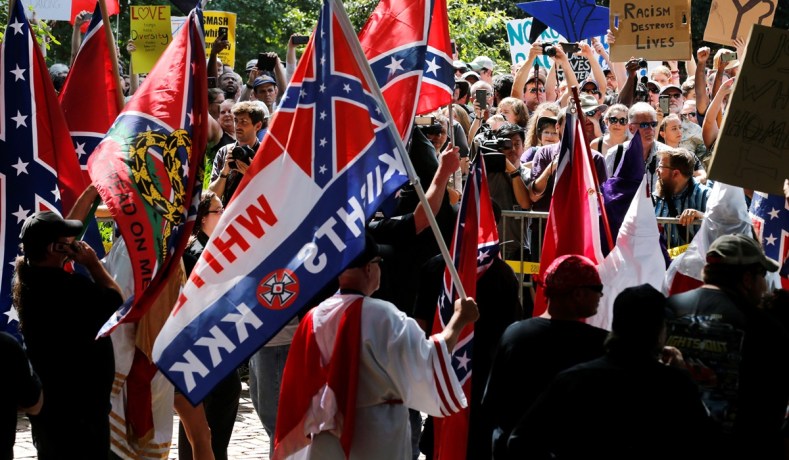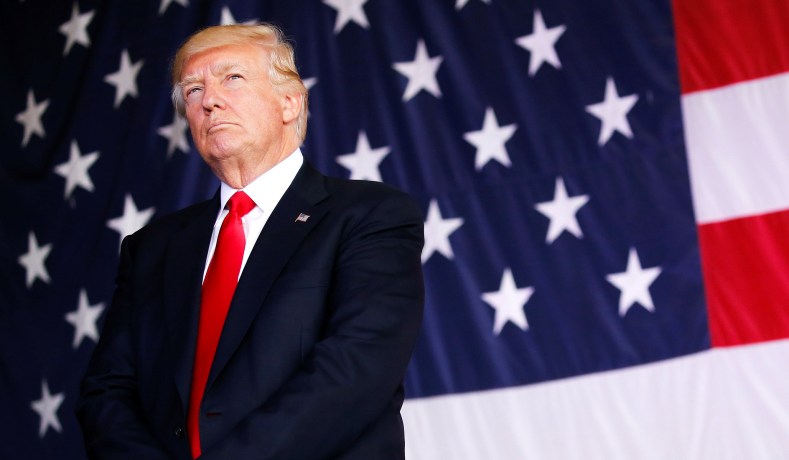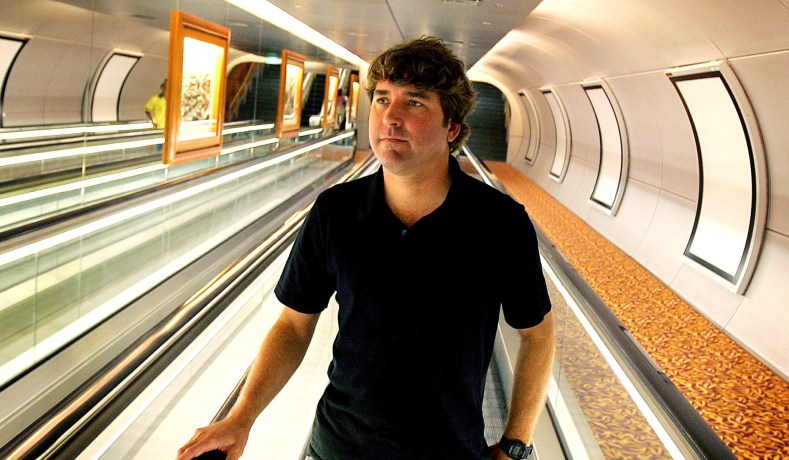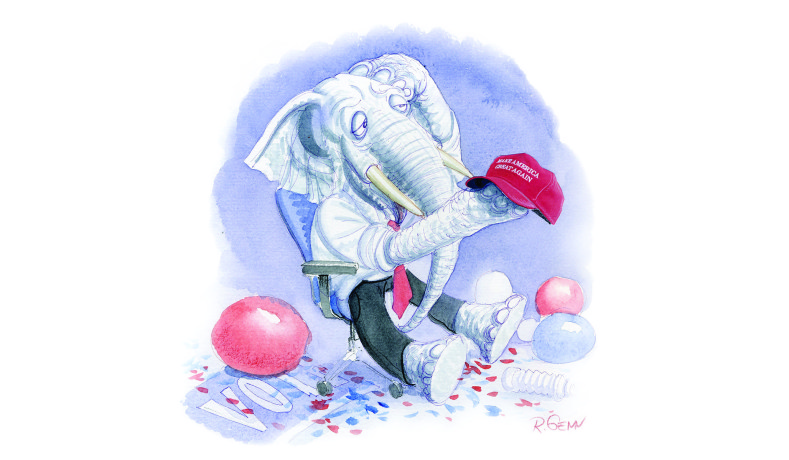

If you’re a conservative, the chances are that you don’t like to talk or think about white supremacy very much. After all, if you enter the marketplace of ideas with conservative views about, say, affirmative action, the welfare state, or ballot integrity, the chances are that you’re used to being smeared as a white nationalist or as playing “white-identity politics.” This is especially true if you support Donald Trump.
Moreover, you’re likely also rightly tired of having the mainstream conservative movement tied to the old-school hate groups, such as the Ku Klux Klan, or to various other fringe racist extremists. When you condemn Antifa mob violence or Black Lives Matter riots, you’re condescendingly told that “the Right” has a far worse problem with domestic terrorism. White supremacists, after all, murder more people than left-wing radicals.
White supremacists are “the Right”? They’re not my Right, you think.
But it’s time to think about white supremacists. It’s time to consider carefully not just the very real violence that is striking too many minority victims but also the growth of a particular breed of young, Internet-savvy alt-right activist who often uses the broader conservative movement’s increasingly belligerent defiance of political correctness both to provide an entry point to actual white supremacism and to gain access to the conservative public.
Let’s deal first with the violence. One of the difficulties in quantifying American political violence is that it’s hard to get good data. Both government and private groups tend to publish deeply flawed studies that sometimes overcount and undercount hate crimes. For example, a much-cited 2017 Government Accountability Office report of violent extremist attacks in the United States included as “white supremacist violence” a 2015 mass shooting at an Oregon community college committed by a black man who hated organized religion and was fascinated by the fame of mass shooters. Moreover, the report entirely omits deadly incidents of left-wing violence against police officers, ignoring, for example, the 2014 ambush killing of two New York City cops and the 2016 mass shootings of police in Dallas and Baton Rouge.
Yet there does appear to be a measurable increase in hate crimes in the United States, with African Americans by far the most targeted group. Hate crimes have been on the rise for three consecutive years (with a 17 percent increase in reported hate crimes in 2017), and there has been a four-year increase in America’s ten largest cities.
Included in that number are extraordinarily vicious crimes. The nation still remembers the Charleston church massacre and the deadly alt-right terror attack in Charlottesville, but other terrible crimes, dating to just last year, are largely forgotten. In New York a white supremacist wielding a sword killed a black man. In Kansas, a white man allegedly shouted ethnic slurs before shooting two Indian engineers in a bar, killing one. In Maryland, a member of an “alt-Reich” Facebook group stabbed a young black Army officer to death without provocation. And the killings just keep happening. Two days before the Pittsburgh synagogue mass murder, a Kentucky white supremacist tried to force his way into a black church and then traveled to a Kroger grocery store where he murdered two black victims before he was confronted by an armed citizen.
The killings, however, aren’t the entire story. Not by a long shot. The online alt-right onslaughts of 2016 are by this point well documented. Jewish journalists who criticized Trump (including our own Jonah Goldberg and Ben Shapiro) were targeted for relentless anti-Semitic attacks. I suffered a wave of racist hate for having adopted my youngest daughter from Ethiopia.
But along with the anonymous trolls came a new generation of very public spokesmen — unabashed racists and white nationalists such as Andrew Anglin of the Daily Stormer and Richard Spencer of the National Policy Institute. A constellation of (mostly) young Internet personalities delighted not just in skewering the Left but in shocking the conservative establishment, and they attracted a strange degree of respect. In March 2016, more-mainstream publications, including Breitbart and the Federalist, published long pieces that whitewashed, rationalized, and excused even virulent white nationalism and white supremacy.
In their now infamous “An Establishment Conservative’s Guide to the Alt-Right,” Breitbart’s Milo Yiannopoulos and Allum Bokhari cast the gang of outright racists and vicious trolls as “young, creative and eager to commit secular heresies.” Steve Bannon, Breitbart’s former executive chairman, proudly stated that Breitbart was “the platform for the alt-right.” In the Federalist, Mytheos Holt wrote a piece, “The Intellectual Case for Trump,” that featured a long aside about his relationship with a young white-supremacist woman. It included this paragraph:
The other reason I say the pain experienced by Sylvia’s community is unfair is because when you strip away the swastikas, imitation Hugo Boss uniforms, and Klan hoods, there are things that even rabid, clannish white nationalist society does better than our own. Ironically, given their loathing of other cultures, the biggest one is bilingual education.
It turns out they learn German and English. How admirable!
Alt-right figures and outright racists keep turning up in Republican politics. For a time, multiple Republican figures, including Bannon and Virginia GOP Senate nominee Corey Stewart, embraced anti-Semite Paul Nehlen. Stewart himself appeared during his primary campaign with Jason Kessler, one of the organizers of the deadly “Unite the Right” rally in Charlottesville.
Then there’s Iowa Republican congressman Steve King. He recently endorsed Canadian alt-right activist Faith Goldy in the Toronto mayor’s race, dined in Austria with members of that country’s far-right Freedom Party, and has endorsed the “great replacement” conspiracy theory that’s popular with white supremacists. The theory rests on the belief that there is an intentional global effort to repopulate the predominantly white nations of the West with masses of immigrants. It’s the origin, for example, of the “Jews will not replace us” chant during Charlottesville rally. King just won election to his ninth term in Congress.
What is happening? Some on the left have a straightforward explanation. Under Donald Trump, they say, the subtext is becoming text. In other words, the “dog whistle” racism that’s the foundation of GOP appeal to much of white America is now out in the open. And as the appeals to white identity become more acceptable, people will feel more comfortable coming out of their racist closet.
Under this formulation, the alleged “economic anxiety” that drove the Trump voter to the polls was but a pretext. White voters were rallying against the Obama coalition, and white-identity politics gave Trump the White House.
There is no doubt that alt-right figures rallied around Trump, and there’s no doubt that some still cling to their MAGA hats. Trump’s words have emboldened white supremacists, but he is not making them racist. What’s happening online and in the real world is far more complicated (and, frankly, worrisome) than the appeal or impact of a single politician.
No, there are immensely important cultural factors in play. The ranks of socially disconnected Americans are growing at alarming rates. Men and women, especially in white working-class populations, attend church less, their families fracture, and they check out of civil society. As Rich Lowry wrote after the Pittsburgh massacre, “the rise of mortality among a subset of working-class whites from suicide, drugs, and alcohol” represents “one of the most stunning trends in American life.”
All too many Americans suffer from a profound lack of purpose. But they still need purpose, and the aimless or despairing man is ripe for radicalization. He’s ready to take the “red pill” (the pill, from the film The Matrix, that opens your eyes to painful and brutal reality) and embrace a new cause.
Lowry sees the work of violent racists as “the handiwork of a very small, violent fringe of the socially disconnected.” This is true, but I’d argue that the broader (nonviolent) wing of white supremacism is a larger part of that same fringe. And when the number of the socially disconnected rises, the size of the fringe will as well.
There’s something else at work also — a poison within the broader conservative movement. Hatred for political correctness has yielded an unhealthy fascination with and admiration for pure defiance. Young voices pride themselves on fearlessness and place attitude over thought in their words and deeds. They troll online and at school to “trigger the libs,” and nothing triggers the libs more than defiance on matters of race.
How could so many people flock to Yiannopoulos’s banner? Admiration for a man who never let anyone tell him what to say. How could any person embrace Paul Nehlen? He was ready to fight and didn’t care who he made angry. If the ethos of the defiant Right is never, ever to accede to either a leftist or (what is, arguably, more hated) an “establishment” or “elite” conservative critique, then it’s easy to see how bigots can flourish.
Finally, it’s worth noting that a secularizing Right is not a better Right. A Voter Study Group survey of Trump voters showed that the less churchgoing they were, the more likely they were to say that being white was “very important” to their identity. Similarly, fewer than half of non-churchgoing Trump voters had “warm feelings” for black people. For churchgoing Trump voters, the figure was a far more healthy 71 percent.
And, it so happens, the non-churchgoing cohort — as Ross Douthat observed in the New York Times — is “less likely to have college degrees, less likely to be married and more likely to be divorced; they’re also less civically engaged, less satisfied with their neighborhoods and communities, and less trusting and optimistic in general.”
To be clear, a people can be religious and racist — as in the Jim Crow South — but most contemporary Evangelical and Catholic leaders are deeply committed to racial reconciliation. Modern Christians are taught from the cradle the biblical truth that all people are created in God’s image and are of equal worth in God’s sight. Indeed, alt-right figures despise and mock this theology, sometimes even rejecting it in favor of militant paganism.
Exposing the source of the problem also reveals its depth. The white-supremacist and white-nationalist surge is a symptom of a greater disease, and it’s a disease with no easy cure.
Yes, you can address symptoms. House Republicans could and should sanction Steve King. Conservative writers and thinkers should expose right-wing racism just as zealously as they expose leftist bigots such as Louis Farrakhan or Linda Sarsour. The online Right should decline to practice mindless opposition and petty trolling, tactics that draw readers to the worst voices on the Internet.
But the work that really matters is the immensely difficult task of cultural repair. Censuring and condemning — though necessary — don’t address root causes. Faith and family can act as a vaccine against extremism. As much as we might wish that better politics could provide the cure, only a purpose beyond politics can truly transform the human heart.



